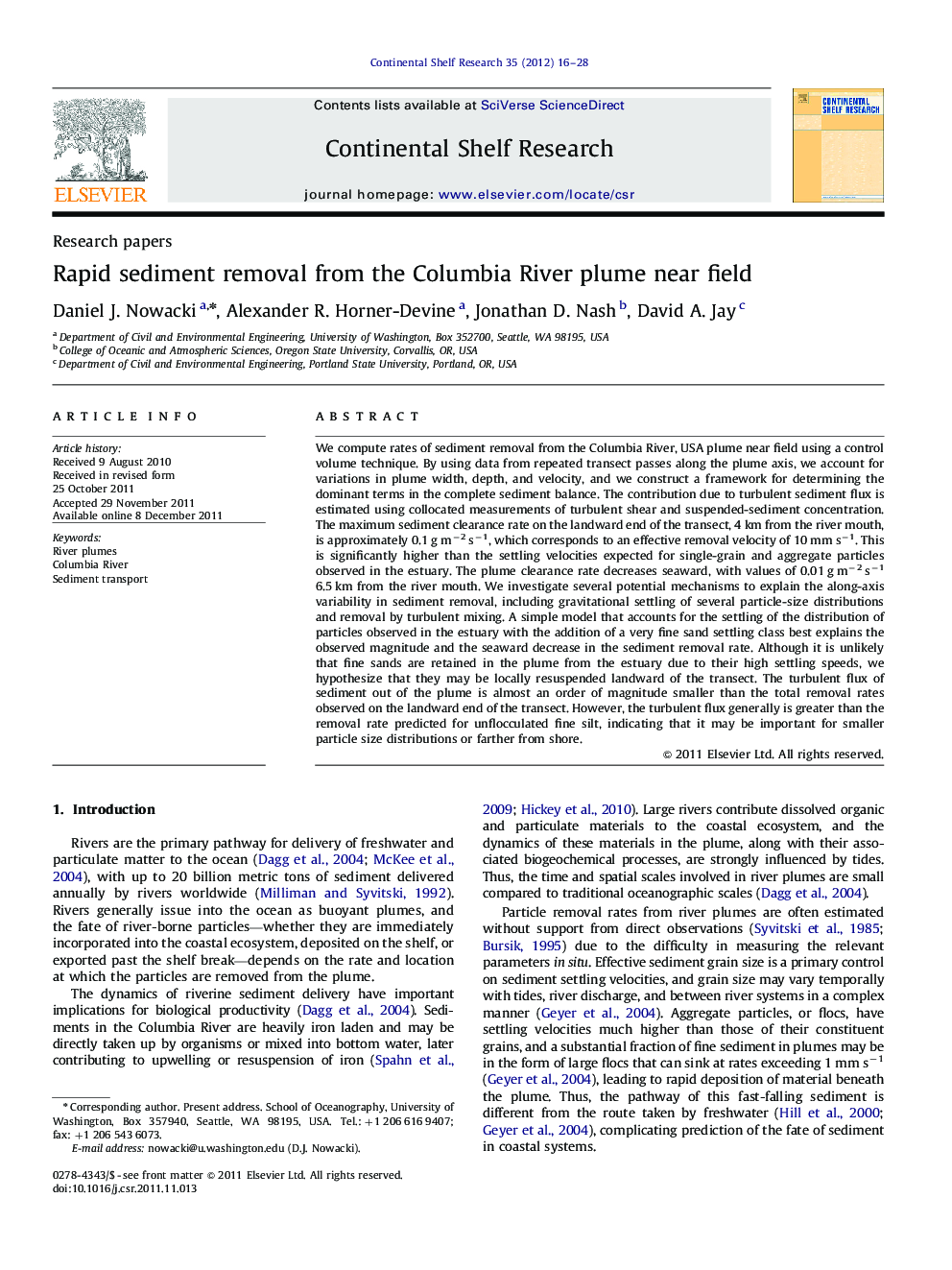| Article ID | Journal | Published Year | Pages | File Type |
|---|---|---|---|---|
| 4532504 | Continental Shelf Research | 2012 | 13 Pages |
We compute rates of sediment removal from the Columbia River, USA plume near field using a control volume technique. By using data from repeated transect passes along the plume axis, we account for variations in plume width, depth, and velocity, and we construct a framework for determining the dominant terms in the complete sediment balance. The contribution due to turbulent sediment flux is estimated using collocated measurements of turbulent shear and suspended-sediment concentration. The maximum sediment clearance rate on the landward end of the transect, 4 km from the river mouth, is approximately 0.1 g m−2 s−1, which corresponds to an effective removal velocity of 10 mm s−1. This is significantly higher than the settling velocities expected for single-grain and aggregate particles observed in the estuary. The plume clearance rate decreases seaward, with values of 0.01 g m−2 s−1 6.5 km from the river mouth. We investigate several potential mechanisms to explain the along-axis variability in sediment removal, including gravitational settling of several particle-size distributions and removal by turbulent mixing. A simple model that accounts for the settling of the distribution of particles observed in the estuary with the addition of a very fine sand settling class best explains the observed magnitude and the seaward decrease in the sediment removal rate. Although it is unlikely that fine sands are retained in the plume from the estuary due to their high settling speeds, we hypothesize that they may be locally resuspended landward of the transect. The turbulent flux of sediment out of the plume is almost an order of magnitude smaller than the total removal rates observed on the landward end of the transect. However, the turbulent flux generally is greater than the removal rate predicted for unflocculated fine silt, indicating that it may be important for smaller particle size distributions or farther from shore.
► We compute rates of sediment removal from the Columbia River plume. ► The control-volume approach accounts for variations in plume width, depth, and velocity. ► The contribution from turbulent sediment flux is estimated. ► High sediment clearance rates of up to 10 mm s−1 are observed. ► We hypothesize that resuspended very fine sand can explain the observed removal rates.
